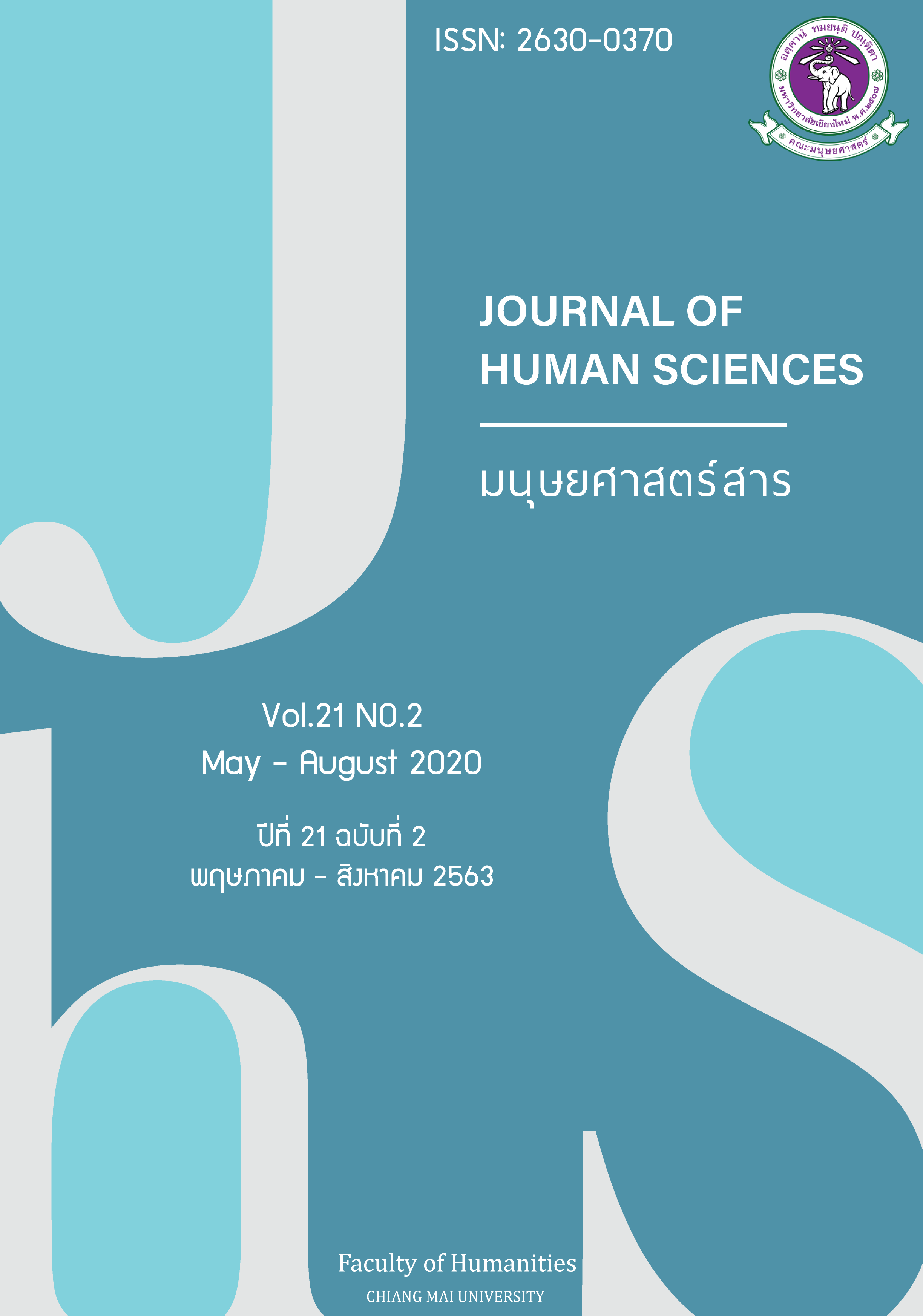มนุษย์-เสือและนักอ่านชาวไทย: กรณีศึกษาเพื่อผู้อ่านวรรณกรรมโลก ณ ชายขอบ
Main Article Content
บทคัดย่อ
วรรณกรรมโลกเป็นประเด็นทางวิชาการที่ก่อให้เกิดข้อโต้เถียงมากมายที่ศูนย์กลางโลกวรรณกรรมซึ่งอยู่ในกลุ่มประเทศซีกโลกเหนือ ทว่ามันกลับถูกพูดถึงน้อยมากในแถบประเทศซีกโลกใต้ซึ่งเป็นพื้นที่ต้นกำเนิดของงานกลุ่มดังกล่าว ปรากฏการณ์นี้ไม่ใช่เรื่องน่าประหลาดใจ เมื่อพิจารณาข้อเท็จจริงที่ว่าแนวคิดเรื่องวรรณกรรมโลกซึ่งสามารถสืบย้อนไปได้ถึงต้นศตวรรษที่ 19 นั้น เกิดขึ้นครั้งแรกในทวีปยุโรป ประเด็นศึกษาซึ่งนักวิชาการที่ศูนย์กลางมองข้ามมาโดยตลอดก็คือการรับและการอ่านวรรณกรรมโลกในพื้นที่ชายขอบนอกซีกโลกเหนือ แม้ว่างานวรรณกรรมกลุ่มนี้จะถูกเผยแพร่ไปทั่วโลกแต่มันมักจะถูกเชื่อมโยงกับกลุ่มผู้อ่านผิวขาวในเมืองมหานครเท่านั้น บทความวิจัยชิ้นนี้เสนอว่า มุมมองของผู้อ่านที่ชายขอบโลกวรรณกรรมมีความสำคัญอย่างยิ่งต่อความเข้าใจ “ปัญหา” ที่เรียกว่าวรรณกรรมโลก และจำเป็นต้องได้รับการยอมรับเป็นส่วนหนึ่งของชุมชนการตีความนี้ ผู้เขียนวิเคราะห์ข้อมูลเชิงประจักษ์ของการตอบรับนวนิยายเรื่อง Lelaki Harimau ของ Eka Kurniawan (ชื่อภาษาอังกฤษคือ Man Tiger ชื่อภาษาไทยคือสมิงสำแดง) โดยนักอ่านชาวไทย เพื่อชี้ให้เห็นความซับซ้อนของกลุ่มผู้อ่านงานวรรณกรรมโลก รวมไปถึงนัยทางสังคมและวัฒนธรรมของมัน ท้ายที่สุด บทความอภิปรายความเป็นไปได้ที่งานวรรณกรรมจากซีกโลกใต้จะพาคนอ่านก้าวข้ามขอบเขตชาติไปพร้อมกับนำเสนอความไม่เท่าเทียมทางสังคมในระดับท้องถิ่น
Article Details
References
Apter, E. S. (2013). Against world literature: On the politics of untranslatability. London: Verso.
Azadibougar, O. (2018). Peripherality and World Literature. Journal of World Literature, 3(3). 229-238.
Brouillette, S. (2015). World literature and market dynamics. In S. Helgesson & P. Vermeulen (eds.), Institutions of world literature: writing, translation, markets (pp. 93-108). London: Routledge.
Cheah, P. (2017). Worlding literature: living with tiger spirits. Diacritics, 45(2). 86-114. Damrosch, D. (2003). What is world literature?. Princeton, NJ: Princeton University Press.
Downes, M. (2019). Found in translation: Eka Kurniawan and the politics of genre. Journal of the Humanities and Social Sciences of Southeast Asia, 175(2-3). 177-195.
Kurniawan, E. (2015). Man Tiger (L. Sembiring, Trans.). London: Verso.
Moretti, F. (2000). Conjectures on world literature. New Left Review 1 (January-February), 54-68.
n+1. (2013a). World lite: What is global literature?. Retrieved from https://nplusonemag.com/issue-17/the-intellectual-situation/world-lite/
n+1. (2013b). “The Rest is Indeed Horseshit,” Pt. 6. Retrieved from https://nplusonemag.com/online-only/horseshit/the-rest-is-indeed-horseshit-pt-6/
Parks, T. (2010, February 9). The dull new global novel. Retrieved from http://www.nybooks.com/daily/2010/02/09/the-dull-new-global-novel/
Phakin. Goodreads. Retrieved from https://www.goodreads.com/review/show/2342268877
Slaughter, J. (2014). World literature as property. Alif: Journal of Comparative Poetics, (34). 39-73. Retrieved from www.jstor.org/stable/24392130
Warnes, C. (2009). Magical realism and the postcolonial novel: between faith and irreverence. Basingstoke: Palgrave Macmillan.

